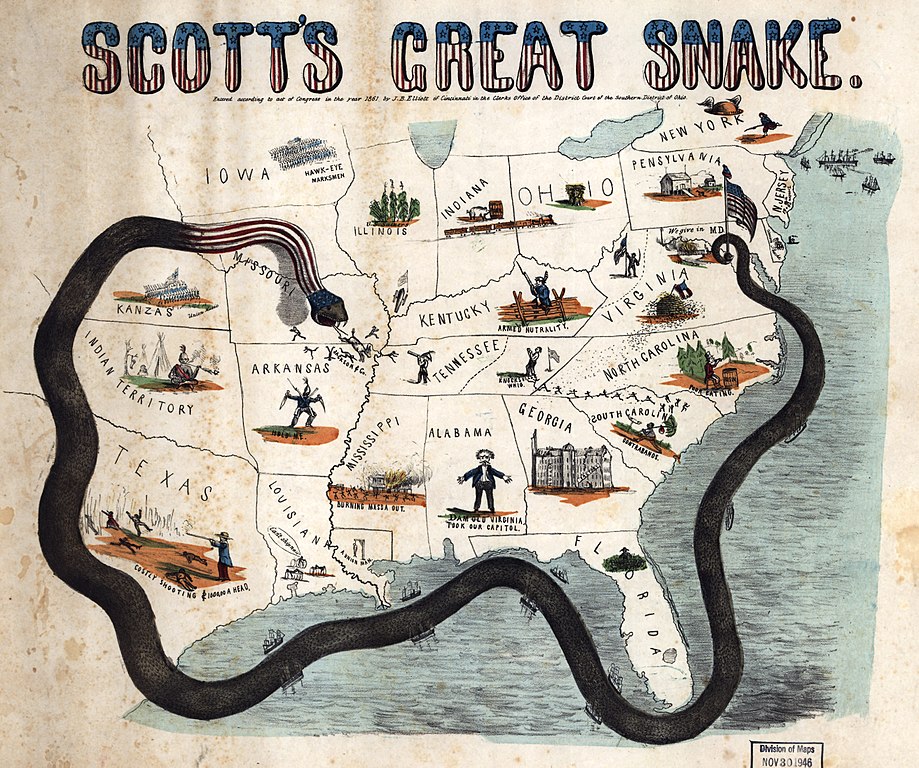Want to see an actual Confederate ironclad riverboat? You may remember hearing about the “Merrimack” and the “Monitor”, two of the most famous ironclad warships from the Civil War. Union troops eventually had to scuttle the Merrimack upon abandoning the Norfolk shipyard in 1861. It was recovered by the Confederates, refitted and renamed the “CSS Virginia”. The CSS Virginia and USS Monitor famously clashed in 1862 as the first steam-powered ironclad naval battle in history. You can see one of the few remains of another massive Confederate ironclad, the CSS Jackson, at the National Civil War Naval Museum in Columbus, GA.
Getting There
Location: 1002 Victory Drive, Columbus, GA 31901
Transport: Your best bet is to have your own car to get around. To get to Columbus there is a small regional airport (Columubs – CSG) or you’ll have lots of options for Atlanta (ATL), which is about 90 miles away.
Highlights
Naval Museum Highlights:
- CSS Jackson "skeleton"
- Largest Collection of Civil War Flags in the US
- USS Hartford Recreation
The Union Blockade of Southern Naval Ports
Soon after the Battle of Bull Run, Winfield Scott, a tenured officer of the Federal army, presented Abraham Lincoln with a blockade plan designed to cut off Confederate naval ports along the Atlantic and Gulf of Mexico and along significant rivers like the Mississippi and Chattahoochee.
Known as Scott’s “Anaconda Plan”, the goal was to encircle the ports and prevent supplies from getting to Confederate troops.
Rivers like the Mississippi and Chattahoochee that stretched deep into Confederate territory were a critical component of Confederate supply lines. The massive steam-powered and iron-clad naval fleets designed for more shallow combat were a result of the fight for control of the rivers and inlet waters of the Confederacy.
CSS Jackson (originally designed as the CSS Muscogee)
To counter the Union blockade, the Confederacy responded with their own ironclad program. The CSS Jackson was built in Columbus, GA following the plan of the CSS Missouri, which was a wide bottomed, shallow draft design created specifically for river use.
Columbus sits on the Chattahoochee River, which divides the southern border of Georgia and Alabama, and was an idea place for a naval yard on the western side of the Confederacy.
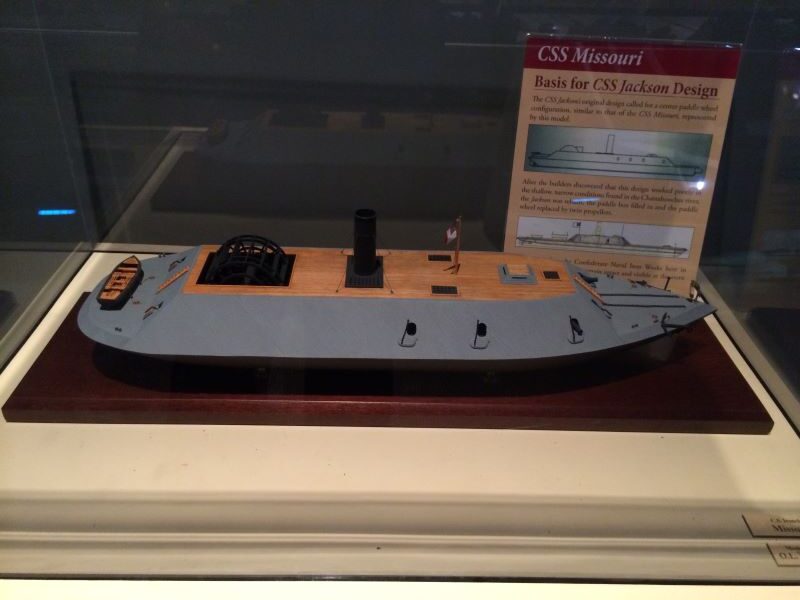
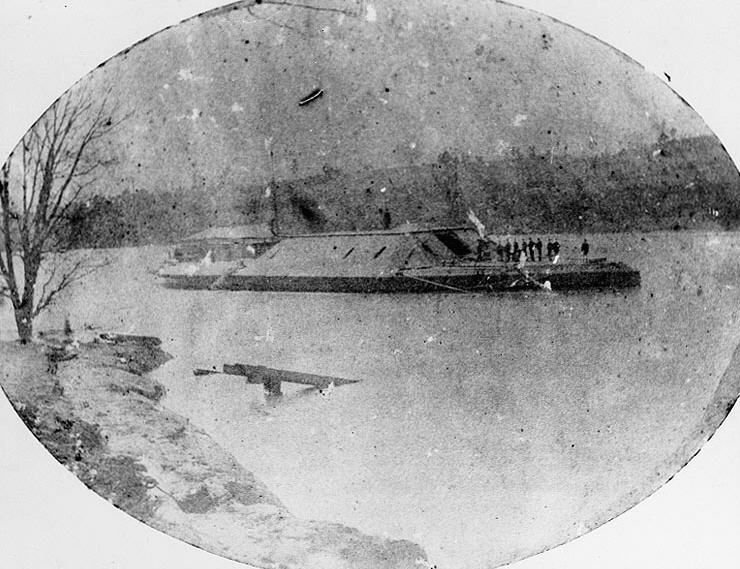
The original plan called for a paddlewheel in the center, but when they tried launching the ship in January 1864 it was too heavy and would not move. Engineers decided to remove the center paddlewheel and designed a double-paddlewheel propulsion system instead.
The ship was originally called the CSS Muscogee but when the redesign was required, an additional series of upgrades were planned, and she was re-christened as the CSS Jackson while being refitting throughout 1864.
Before the upgrades could be completed, however, Union troops captured the ship in the dock in April 1865 following the Battle of Columbus and she was set on fire. Her moorings were cut and she burned adrift on the Chattahoochee for about 30 miles until she ran into a sandbar and sank.
In 1910, the site was found by the Army Corps of Engineers, who recovered the machinery but determined the ship itself was not salvageable due to the fire damage.
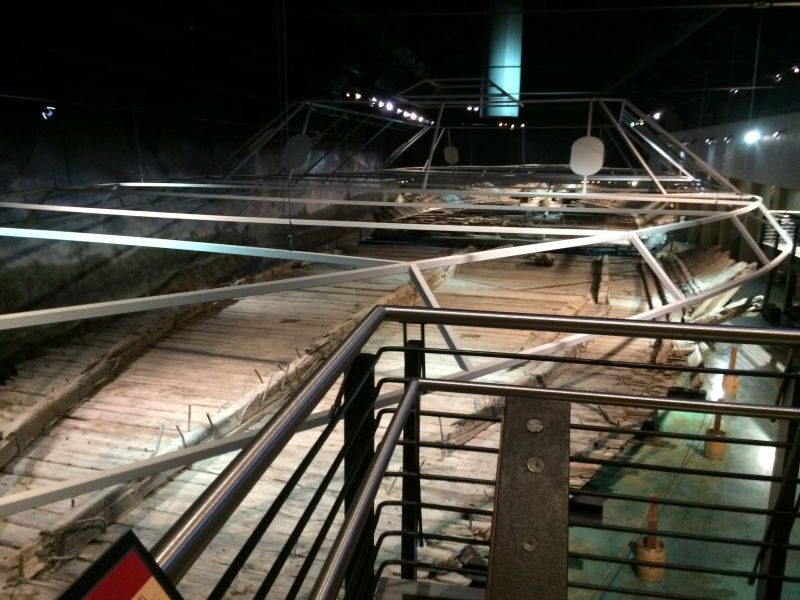
Eventually, it was decided the wreckage would be salvaged and preserved in the National Civil War Museum. The stern was raised first in 1962 and the bow was recovered the following year. A metal frame has been added to help visitors recreate the scale and design of this unique piece of American history.
I haven’t read it myself, but I did find there is a book called “The Last Gray Lady: The CSS Jackson” by Roger C. Campbell if you’re interested in learning more.
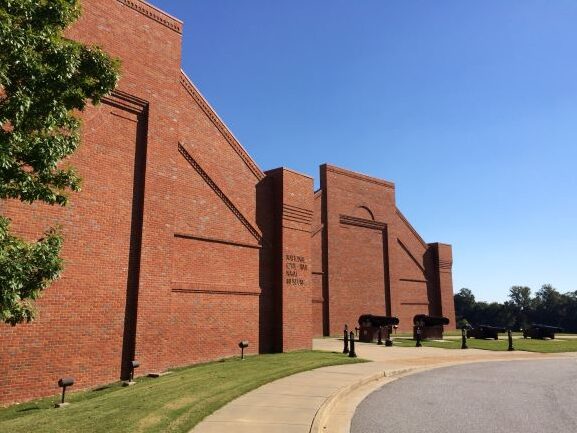
The museum itself has several really great exhibits on the naval battles of the Civil War. There’s another salvaged ship, the CSS Chattahoochee, and full scale replicas of other Union and Confederate ship components for a better idea of what they would have looked like at the time.
I didn’t have time to go when I was there, but there’s also a National Infantry Museum in Columbus that looks fantastic. Fort Benning is a major US military post in town as well, so there is quite a bit of military history to be explored in the area.
Interested to know more about this overall time period? Here is a brief summary of key historic events taking place in the Modern time period.
Post Sources:
[bg_collapse view=”link” color=”#4a4949″ icon=”arrow” expand_text=”Show More” collapse_text=”Show Less” ]
American Battlefield Trust: Clash of the Ironclads
National Civil War Museum website
[/bg_collapse]

